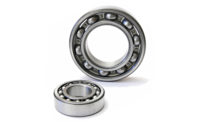Optimization — the holy grail of management!
Of course we want optimization. We want our production processes optimized for maximum efficiency and minimum scrap. We want our logistics optimized for minimum cost. And we want our spare-parts inventory optimized so that we stock only what we need, when we need it.
But what does it mean to optimize? The Oxford Dictionary defines optimize as: “to make the best or most effective use of a situation or resource.”
This definition sounds like something that we all want. However, in management, whenever someone talks about optimization, they are usually talking about a mathematical model of optimization, which requires the minimization of some factor, within one or more constraints.
This is known, unsurprisingly, as constrained optimization, and this is what software programs designed to optimize inventory do — they perform a constrained optimization.
Such an outcome is fine, if the constraints are actually fixed, but it can be misleading (at best) if they are not. In the management of spare-parts inventory, very few of the assumed constraints are actually fixed — thus, optimization software is not the solution to your overstocked spare-parts inventory.
There are a number of problems with using optimization software for your spare parts, including:
- Is your data actually any good? For spare parts used to support maintenance and operations, the data is usually unreliable because of the human interaction involved, the lack of related planning and the urge of maintenance people to take more than they really need. Furthermore, how often do you find that people have taken items without signing them out of the storeroom?
- Which algorithm do you use for the optimization? Do you assume a statistical model with a normal distribution, do you assume level loading, do you analyze volatility, do you use different algorithms for different inventory types? This isn’t a trivial issue, and it has a massive impact on the results.
- Optimization looks at the past, not the future. We need our spares in the future, but numerical optimization is only based on the information of the past. Maintenance activity can be quite dynamic: Failure patterns change, equipment changes, techniques change, skill levels change. Using the “rear-view mirror” of numerical optimization hardly seems like a suitable way to manage the spare-parts demands of the future.
- Then, as stated above, optimization assumes constraints that may, or may not, be real. By its nature, numerical optimization is constrained optimization, that is, you need to assume that most factors are fixed and not changeable, otherwise you need a supercomputer to do the work. But these factors may not be fixed and relying on numerical optimization stops you from examining the real constraints. These include the ability to influence the supply chain, vendor demands and your own procurement processes.
There are many issues with inventory optimization, yet you would not think this was the case if you relied on the marketing material produced by those in the optimization industry.
So next time you are looking to review your spare-parts holdings, be wary of thinking that numerical optimization actually delivers an optimal solution, because it really can’t do that.






Report Abusive Comment